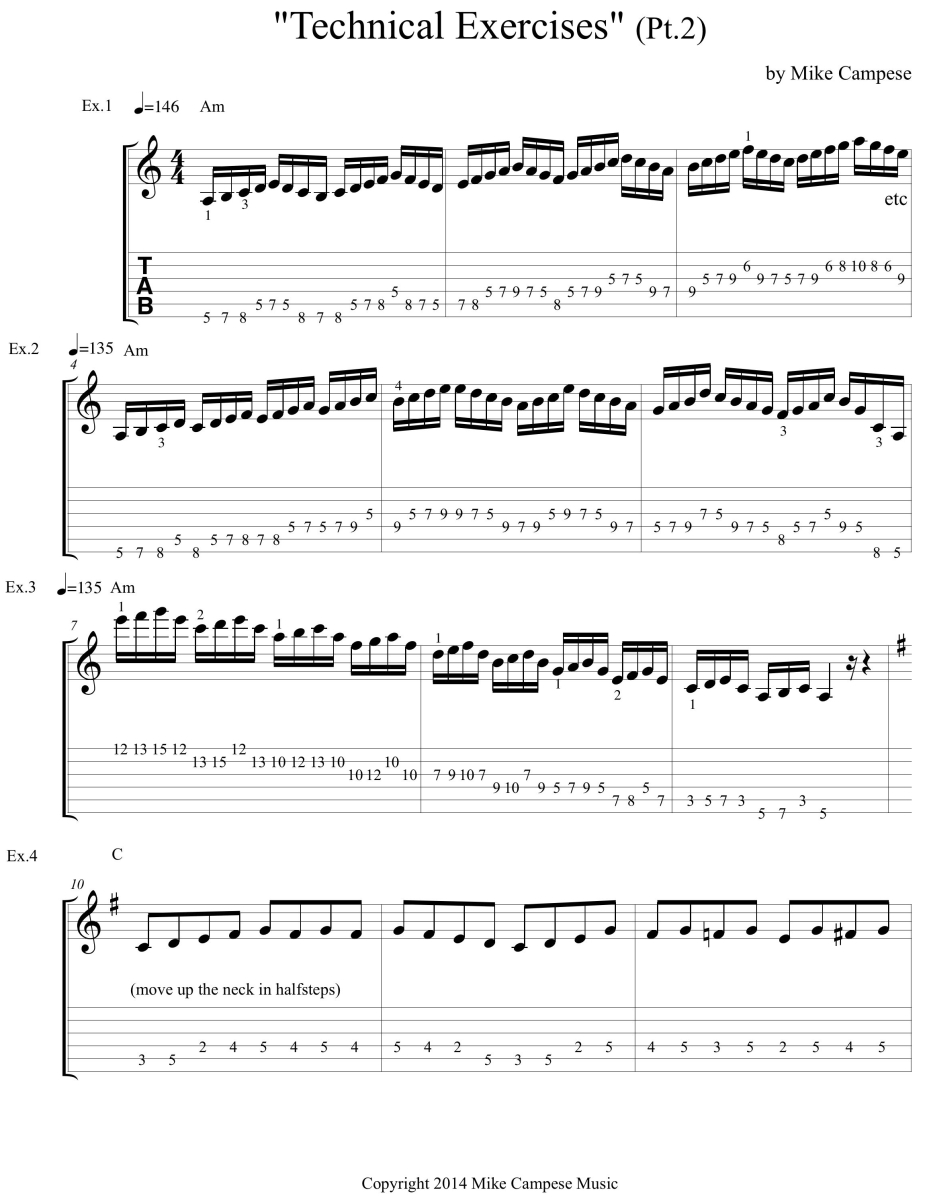Welcome back to the second part of my technical exercise lesson! Hopefully, you have the first part of this lesson complete and are ready to move on to part 2. In this lesson we will continue with some fast scale passages and some great exercises to develop your dexterity. In part 1 of this lesson the examples are all in the A minor scale and this lesson we will mostly stay in A minor as well, but be sure to play these in all keys. All of these exercises I'm giving you apply to all the scales and there are so many different ideas you can come up with, the sky is the limit. Don't forget to alternate pick all these examples and use a metronome or drum groove when practicing.
Example 1 is a scale sequence in the A minor scale (A, B, C, D, E, F, G). This pattern is an up 4, down 4 sequence that is ascending up the scale. Basically, you begin by playing 4 notes up the scale and then you play the next 4 notes down the scale. For example, (A, B, C, D) and then (E, D, C, B), continue this same pattern all the way up the scale. Be sure to alternate pick this whole example.
MP3 - Technical Exercises, Part 2, Example 1
Example 2 is a couple of scale sequences mixed together into one line, which can be a great way to apply these patterns. In the first bar, the first sequence is an up 4, back 1 sequence, for example, (A, B, C, D) and then (C, D, E, F). This pattern continues up to the G string and then beginning on the second beat of bar 2, it goes to a back 4, up 4 sequence. The pattern beginning in the 2nd bar is the same sequence as example 1, but reversed. Finally, the very last beat there is a string skipping pattern that may be a little tricky.
MP3 - Technical Exercises, Part 2, Example 2
Example 3 is a neat 4 note pattern that moves down the neck in 3rd intervals in the A minor scale. You could also try playing this pattern off of each scale step or moving down on each string as well. I suggest playing this example real slow at first and then speeding it up. It can be tricky for the right hand and it makes a great picking exercise.
MP3 - Technical Exercises, Part 2, Example 3
Example 4 is a really great exercise that will help you develop your finger independence, especially between your 3rd and 4th fingers. It is based in the C Lydian scale (C, D, E, F#, G, A, B) with some added passing tones. Try moving this pattern up the neck in half steps.
MP3 - Technical Exercises, Part 2, Example 4

OK, that is it for now! Be sure to make up your own patterns and don't forget to check out my latest CD, "Chameleon". Don't forget to visit mikecampese.com for more information.
Mike Campese is an all-around music performer, session artist and teacher competent in many musical styles, electric and acoustic. He has studied at G.I.T. (Honors Graduate), and with Paul Gilbert, Norman Brown, Stanley Jordan, Scott Henderson and Keith Wyatt.